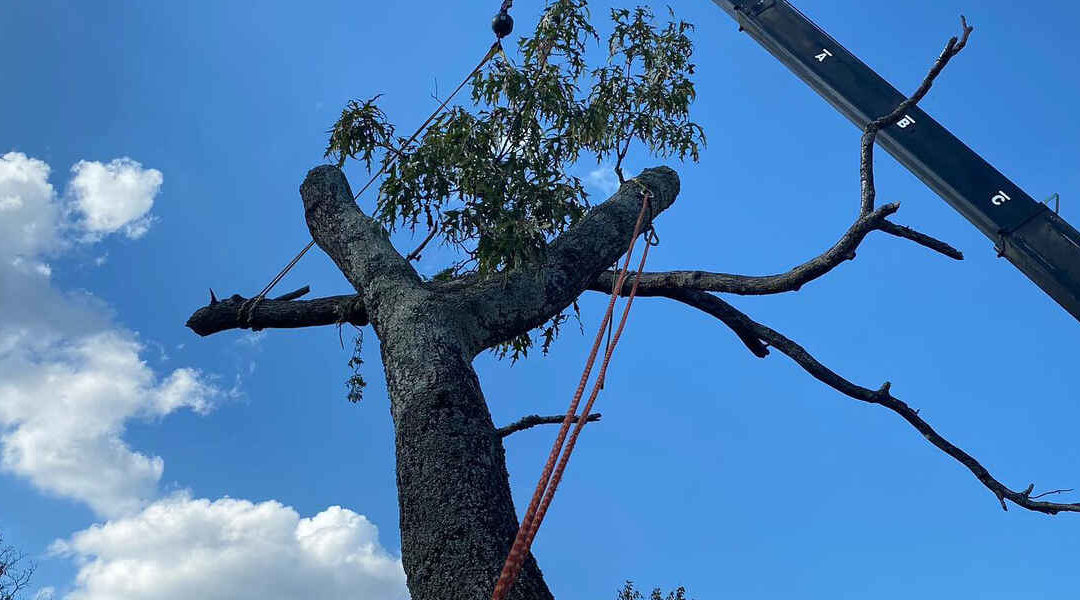What is a tree sucker? They’re essentially fast-growing shoots that emerge from the rootstock near the base of a plant and rapidly send up vertical growths several feet high. They might seem nothing more than an unsightly nuisance at first glance, but they can also affect your tree’s health over time.
Worry not! As Malvern’s professional tree service, we at Urban Jacks Tree Service know a thing or two about landscape care. In this blog post, our specialists break down the nitty-gritty details of this common plant headache and what you can do to address it.
What Makes Tree Suckers So Troublesome?
Tree suckers compete with established top branches for much-needed nutrients. If you leave them unchecked, you risk slowed-down growth and a poorly balanced structure in the long run. The weaker branches created by these shoots also break more easily, leaving your tree vulnerable to infections and infestations.
Why Do They Form?
Do you have grafted trees? Many growers propagate fruiting and ornamental plants by splicing the desired variety onto another type of rootstock. Having a tree spliced produces a stronger and more robust plant, but it’s also more prone to suckering from beneath the graft.
Tree suckers may also form in response to environmental stress. Common culprits include:
Disease
When sick, many species redirect energy to producing suckers instead of bearing fruit or foliage. Leaf spot, fire blight, leaf rust, and anthracnose all cause this kind of reaction. Watch out for the red flags, such as:
- Yellowish or wilted foliage
- Bark cankers
- Premature leaf drop
- Branch dieback
- Poor fruit production
Pests
Don’t ignore creepy crawlies! Japanese beetles, stink bugs, and scale insects can slowly weaken your tree by consuming its sap. Eventually, it may produce suckers to compensate.
Drought
A prolonged period of dryness can stress out even the hardiest species. Some trees respond by shooting up suckers and limiting top growth.
Over pruning
Overzealous trimming can lead to weakened crowns and sparse branches, both of which put your plant in a state of shock. In general, trees only need pruning every three years. You should also avoid cutting into growth that’s more than a few years old.
What Are the Treatment Options?
Now that we’ve answered the question, “What is a tree sucker?” let’s explore the different ways to get rid of them.
Physically Remove Them
Use sharp pruning shears to make a clean cut as close to the base as possible while avoiding the collar (where the sucker and tree meet). This method speeds up wound recovery and minimizes stress.
If the growths are still small, you can grab onto them and pull them out gently. You may be able to remove their nodule too.
Apply Herbicides
We only recommend chemical solutions when you want to eliminate suckers growing from a cut-down tree. If you don’t want to affect nearby grass or plants, a stump grinder can also do the job.
Enlist the Help of a Certified Arborist
Every tree reacts differently to changes in its environment. The only way to ascertain the right approach is to bring in a plant expert, who can recommend the best strategies and materials for your particular case.
At Urban Jacks Tree Service, we’ve seen it all! Our veteran crew knows how to diagnose and treat tree suckers for good. You can expect:
- In-depth diagnosis and assessment
- A tailored treatment plan based on your budget and preferences
- Preventive maintenance services to curb future outbreaks
- And more
If you need more insight on what is a tree sucker, call (501) 547-4018. We also encourage you to read our blog post and learn more about other hazardous defects on trees.

